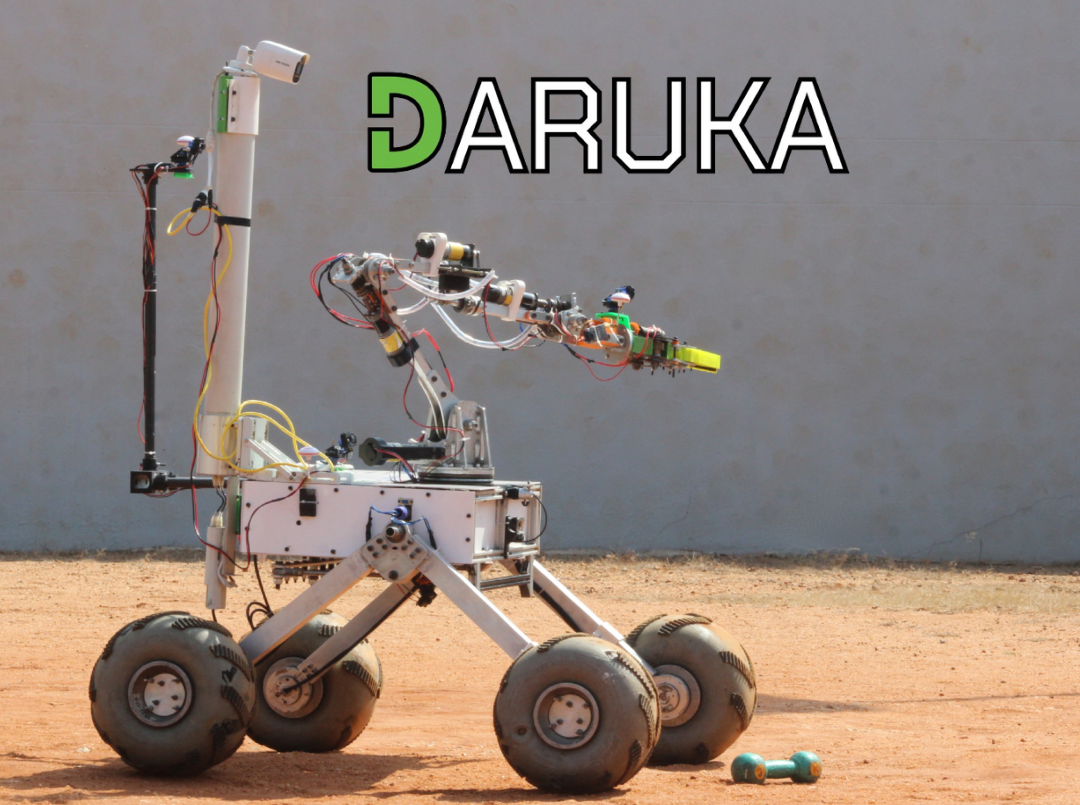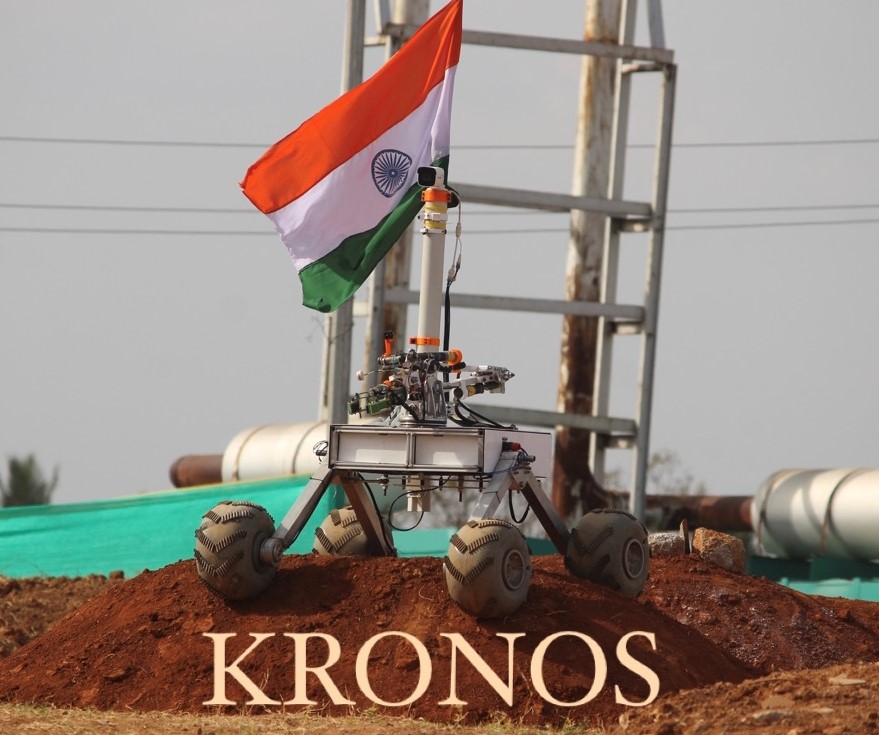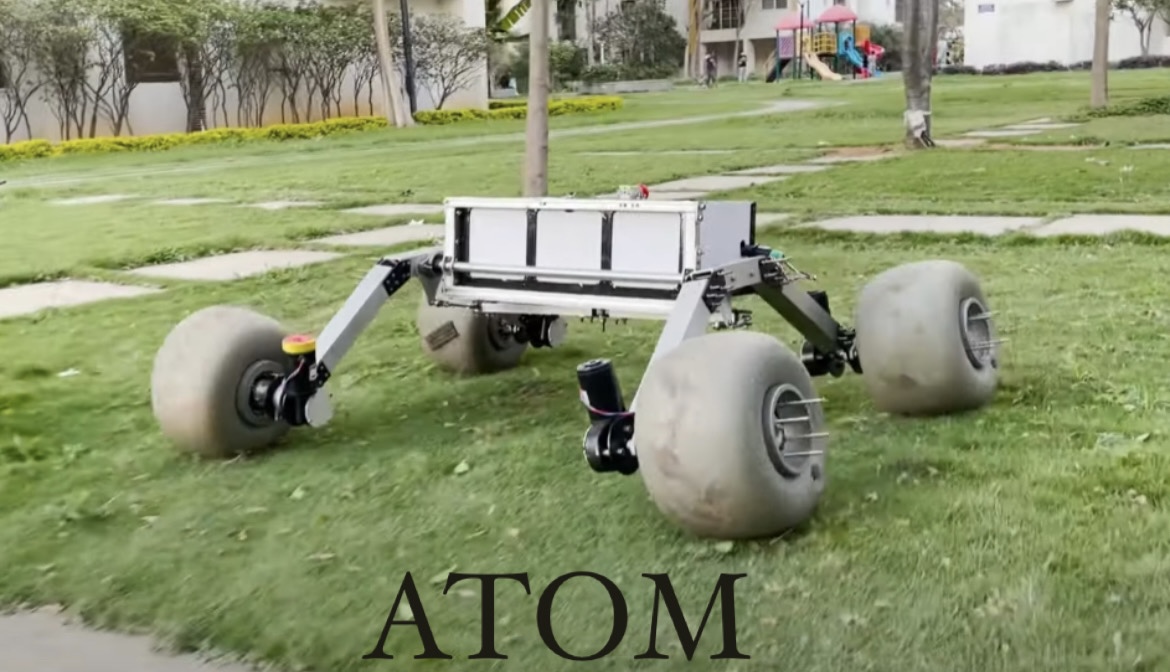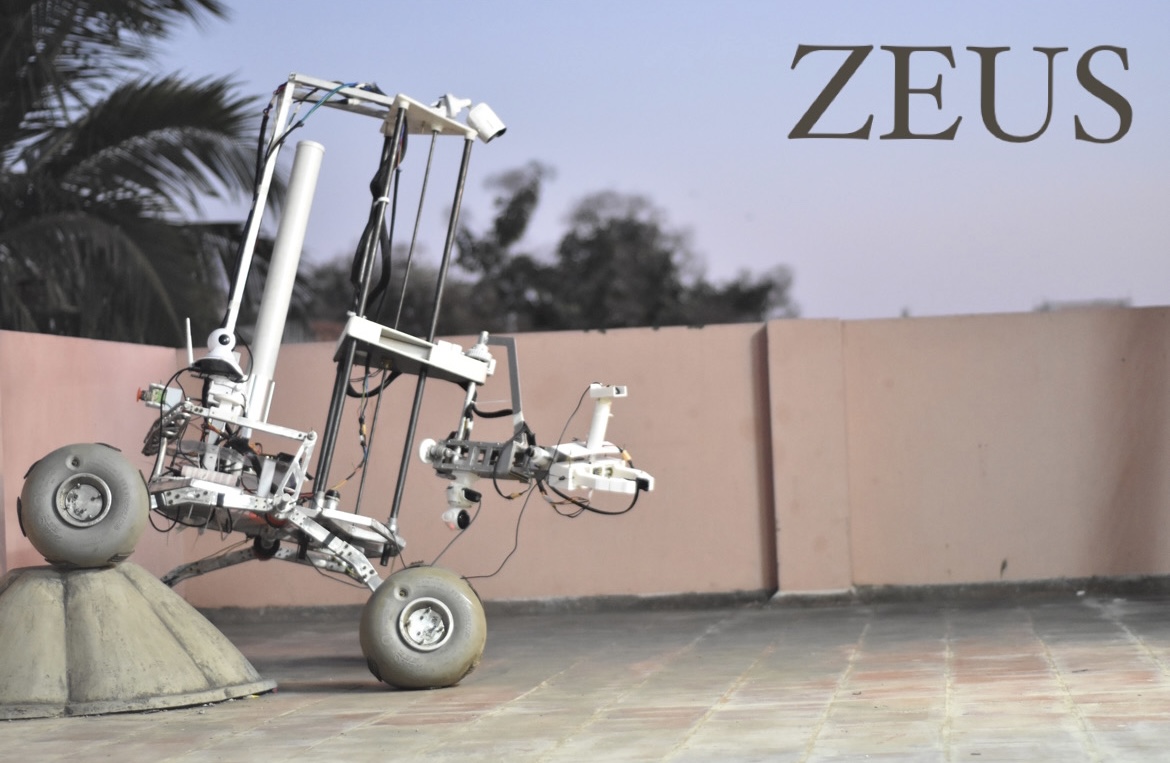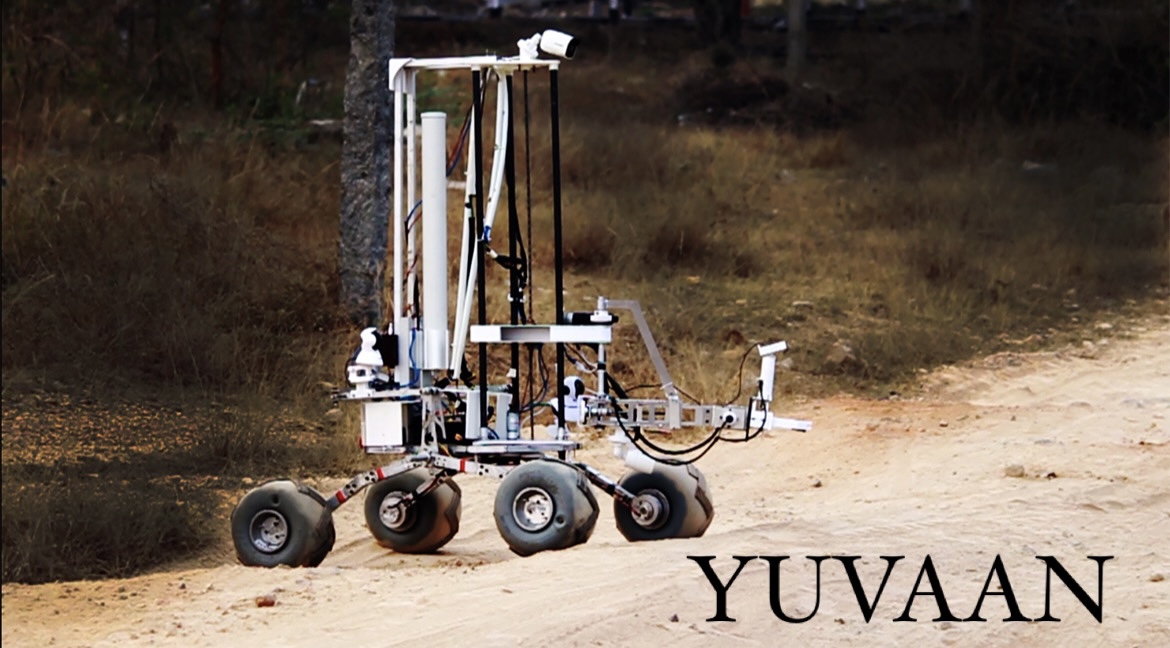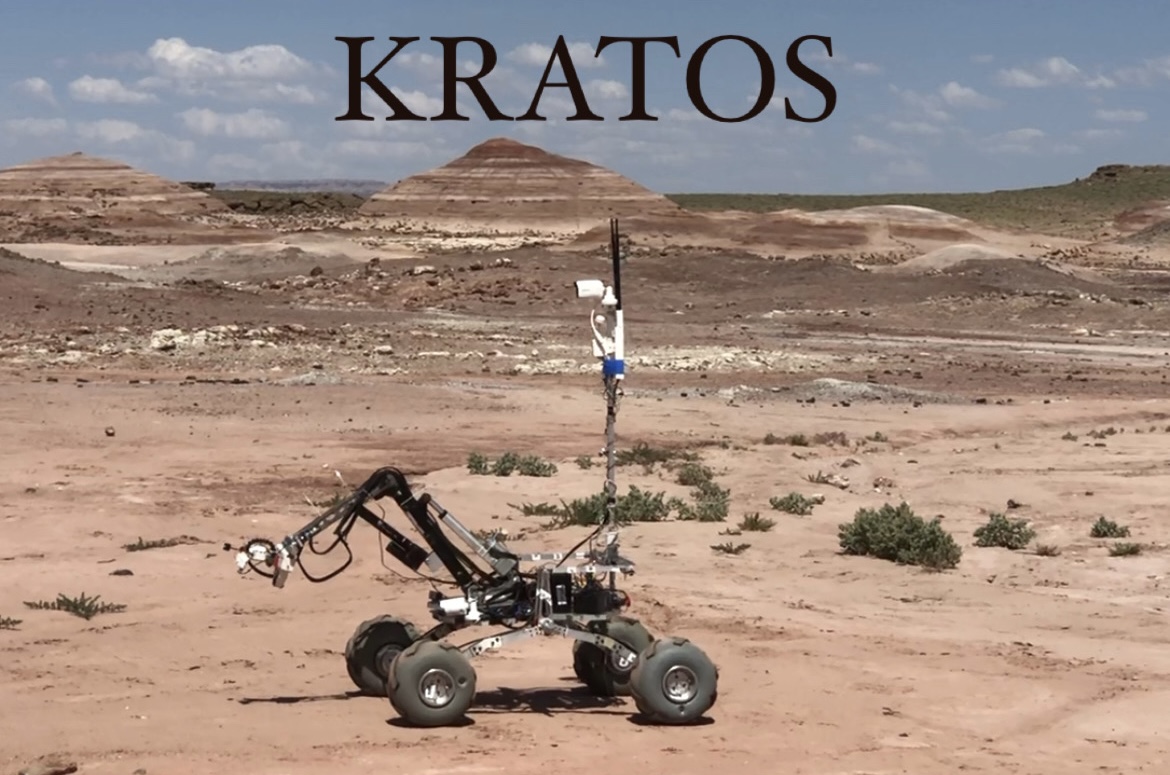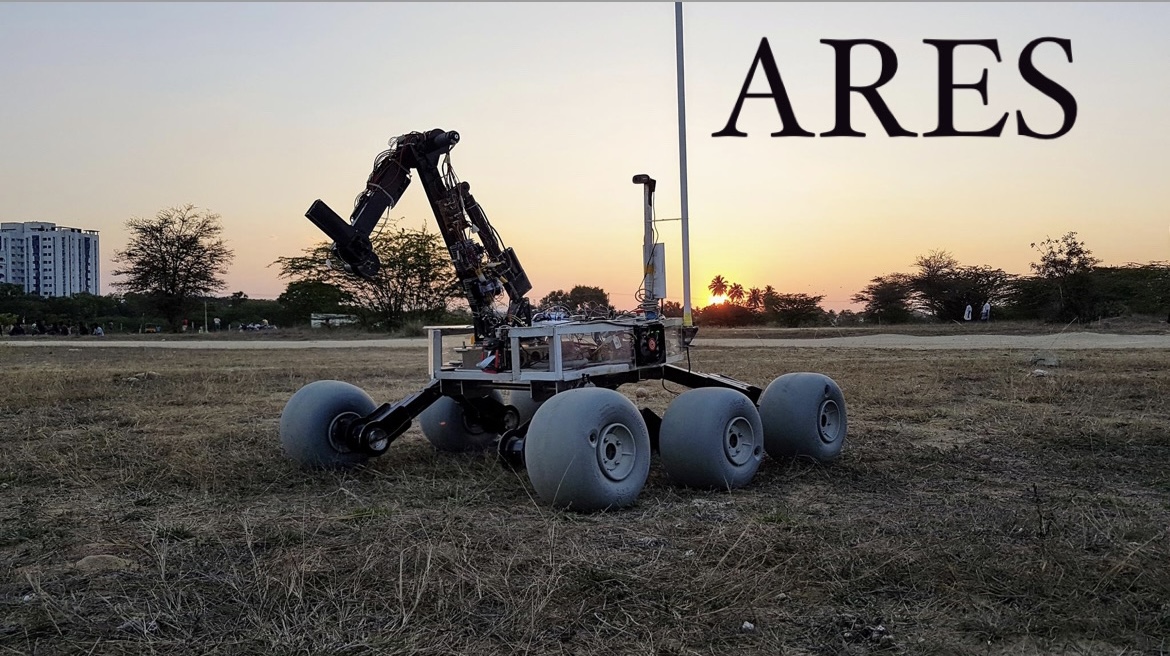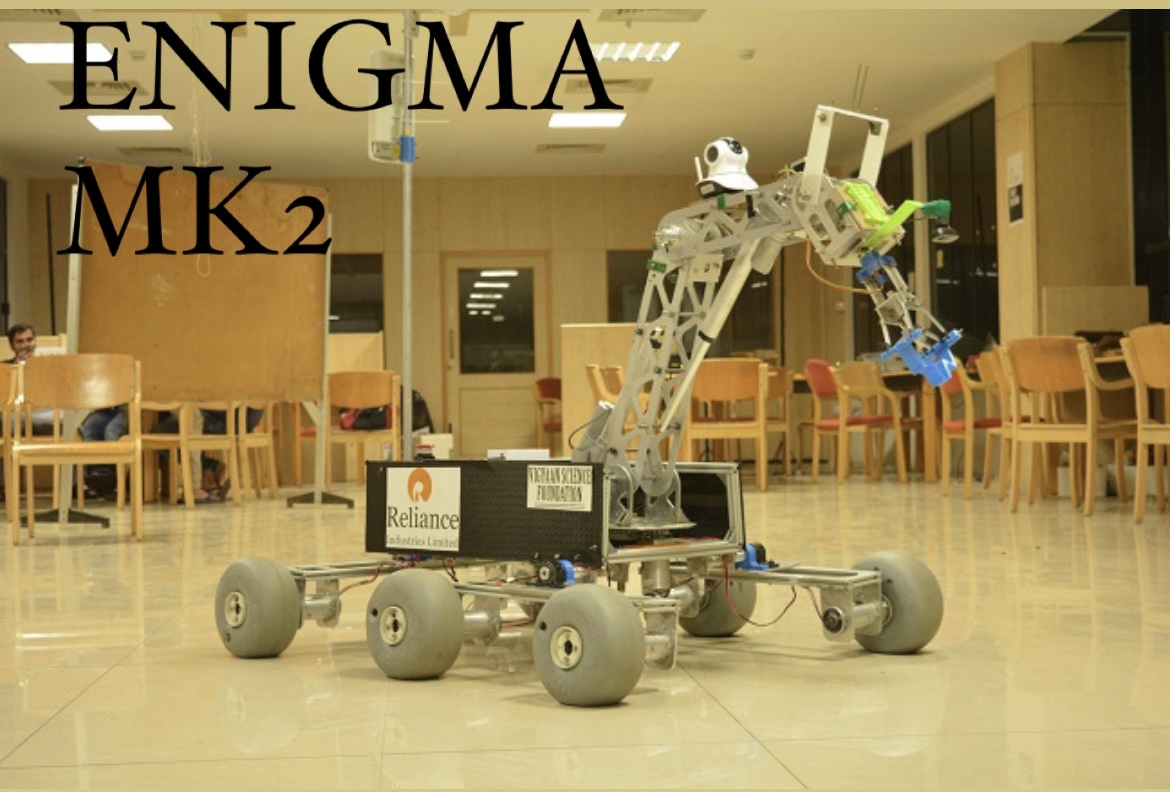DARUKA
2024
Daruka features a double-rocker suspension system with a modular space frame chassis made of V-slot links, designed for enhanced accessibility. Capable of traversing rocky, sandy, and muddy terrains, it handles steep drops and climbs with ease. The ground clearance is optimized to avoid collisions with obstacles, while the double rocker system and bar differential maintain the center of gravity for reliable mobility. Powered by the Nvidia Jetson Orin Nano, Daruka operates a 5 DOF robotic arm and an advanced science subsystem. The R&D department is focused on integrating a dynamic tracking system and inverse kinematics for better remote manipulation.
